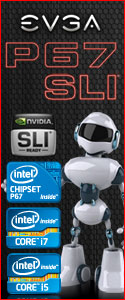 The good folks at Raidmax were kind enough to send along their new release Viper mid tower case for review today. Raidmax has been around since 1988, so obviously they are not the new kid on the block. Over the years Raidmax has offered products generally geared towards those on a budget, all the while attempting to give a quality product at an affordable price. The press release accompanying the release of the Viper proclaims “The awesome new Viper case from Raidmax transforms your PC with jaw dropping design. Leading PC chassis maker innovates again with tool free setup and easy cable management”
The good folks at Raidmax were kind enough to send along their new release Viper mid tower case for review today. Raidmax has been around since 1988, so obviously they are not the new kid on the block. Over the years Raidmax has offered products generally geared towards those on a budget, all the while attempting to give a quality product at an affordable price. The press release accompanying the release of the Viper proclaims “The awesome new Viper case from Raidmax transforms your PC with jaw dropping design. Leading PC chassis maker innovates again with tool free setup and easy cable management”
Read on as we explore the Raidmax Viper and what it has to offer you, the consumer.
As mentioned before, Raidmax is certainly not a new comer to the world of PC component manufacturing. Below is a little history on the company as taken from their website:
“Raidmax was founded in 1988 with the mission of providing the best solutions: specifically, meeting your requirements for innovative designs, excellent performance and quality products.
In early 2003, Raidmax was the first to debut the design “Scorpio”: an alien eye shape on its general front panel. At the time, it was the best ever hit in the gaming case business and almost every factory had owned at least one similar design back in China. Two years later, Raidmax released another cutting-edge design, Samurai, and people who had seen the case itself instantly fell in love.
After numerous global feedback, Raidmax is known all over the world. It is said our company is not only a case designer but also the perfect budget keeper. You can simply spend a little but you receive higher quality than you expect.
It has been more than 10 years since Raidmax began its work on its unique product lines and market position. The name of Raidmax is synonymous to gaming design and budget cases. In the United States, Raidmax is considered to be the best second tier brand; in Asia, it is said that only Raidmax can offer the budget cases with great designs; in Europe, with almost no brand management, Raidmax’ followers are still showing their loyal support in many ways.”
The Raidmax Viper comes in three different color options: black, white, and red. Today we will be reviewing the black version of this new Raidmax offering. Lets begin the review with a look at the features and specifications of the Raidmax Viper.
Features
- Optional side window mounted 120mm blue LED fan keeps your system cool and looks great!
- Aggressive front panel design.
- Two front panel USB 3.0 ports.
- Water cooling support
- Tool free drive installation
- Slide out side panel handles
- Rubber grommet cable management protects cables.
- Mesh design expansion slots aid ventilation.
- Cable management design.
- Bottom mounted PSU.
- Bottom PSU fan filter.
Specifications
| Basic Specifications | |
| External Drive Bays | 4 X 5.25, 1 X 3.5 |
| Internal Drive Bays | 4 X 3.5 HDD |
| System Board | 10X12 Max Size ATX / Micro ATX |
| Expansion Slots | Standard ATX 7 Slots |
| I/O Ports | 2 X USB 3.0, Headphone, MIC |
| Dimensions | 521(L)X185(W)X445 (H)mm |
| Cooling System | |
| Front | 1X120mm Blue LED Fan |
| Side | 1X120mm Blue LED Fan |
| Back | 1X120mm Black Frame W/Black Blade Fan |
| Top | None |
| Available Colors | Black, White, Red |
We noticed a couple of discrepancies between the specifications listed on Raidmax’s website versus what we actually received for review. The website specifications list the side panel 120mm blue LED fan as optional, but our review sample has one installed. Also, on the website it states the front panel has one USB 2.0 and one USB 3.0 port, both our ports are USB 3.0.
Packaging
The box design incorporated for the Raidmax Viper is quite colorful and aesthetically pleasing. The front of the box has a full view of the front of the case and its proclaimed “Aggressive Design”. The back of the box has several thumbnail pictures describing many of the features the Viper has to offer. The two box sides are identical with pictures of the three different colors available and a list of specifications. The box top has the Raidmax and Viper branding, and an address to Raidmax’s website.
 |
 |
 |
 |
Opening the box we find the chassis itself securely packaged in the box. Raidmax did a terrific job here with foam inserts laid inside the cardboard top and bottom supports. Excellent packaging!
 |
 |
Next up is a tour of the exterior of the Raidmax Viper.
We’ll start our exterior tour of the Raidmax Viper by having a look at the front panel area, which is solid plastic. The black and orange color scheme applied to the rugged looking front panel go very nicely together and gives the case a unique look. Raidmax chose to incorporate a swinging front door in the design, which covers the 5.25″ and 3.5 drive bays when closed. Whether you like the swing door design or not – it’s purely a matter of one’s own taste. The swing door on the Viper opens and closes very easily and uses a magnet design to keep it shut. The only drawback to Raidmax’s implementation here is the fact that the door must be opened to access any of the font panel’s features. If you want to simply turn the computer on, plug in a USB device, or access the headphone and mic jack, then the door must be opened to do so. It might have been nice to at least be able to plug in a USB device or even just turn the computer on without having to open the swing door.
Once the door is opened, you have access to the four 5.25″ drive bays and the single 3.5″ drive bay. Below the drive bays and to the left is the power switch and the accompanying LED light. Just below the 3.5″ drive bay are the two USB 3.0 Ports, along with the headphone and mic jacks. To the far right of this area is where the reset switch and the HDD activity LED light are located.
The bottom of the front panel is highlighted with orange accent strips and large cut outs which provide ample air flow needed by the included 120mm front intake fan. There is however, no dust filter included.
 |
 |
 |
 |
 |
 |
The top panel of the Viper case features no fans, or even the option for one. It is simply a solid metal top panel, not much to talk about here. While including a fan is not a must, at least the option for the consumer to add one would have been a nice addition.
Next we have a look at the two sides of the Raidmax Viper chassis. The right side of the case is a solid panel with no design features similar to the top panel of the case. The left side of the Viper features a smoke tinted window with a 120mm blue LED fan mounted to it. We are not quite sure what the reasoning behind the smoke colored tint is as it may make any internal lighting the user installs look a little odd when viewing through the window.
Both side panels are constructed well, and while not the heaviest metal we have ever come across, they are certainly not the flimsiest either. The left side window came packaged with a protective film on the outside to protect it from scratches during the shipping process.
 |
 |
 |
|
Moving around to the rear of the Raidmax Viper chassis we find some interesting features that were designed for this area. At the bottom is the opening for the power supply unit to be installed. There is an included dust filter here, which easily slides out for cleaning Great feature! Just above the PSU area are the standard seven PCI expansion slot covers. The covers are of a metal, mesh design and blue in color. Just to the right of that are three rubber grommet holes for water cooling system tubes to pass through.
You will notice while looking at the pictures below that there are two handles at the rear of the Viper. These are used to slide the side panels off. The handles swing open towards the rear, which allows easy access for pulling off the side panels. The handles are another unique feature designed into the Viper. Job well done here.
Moving up to the top of the rear section we see the I/O shield opening and another 120mm blue LED exhaust fan.
 |
 |
 |
 |
 |
 |
 |
|
We’ll conclude our exterior tour of the Raidmax Viper by having a look at the bottom of the case. The large design of the feet makes for a very stable feel when the unit is placed on a surface. There are four rubber strips applied to the feet that aid in reducing vibration as well as protecting any surface the case is set on. You can also see in the picture below how the PSU filter rests when fully installed. All and all, a clean and very functional design has been implemented at the bottom of the Viper case.
 Read on as we explore the inside of the Raidmax Viper chassis!
Read on as we explore the inside of the Raidmax Viper chassis!
We will start our tour of the Raidmax Viper’s interior with a look at the inside of the left side panel. As mentioned before, the window has a smoke coloring to it and a clear blade 120mm blue LED fan is attached. The fan comes with a four pin Molex power connector only, so, if you want to connect the fan to a motherboard fan header, an adapter cable will be necessary. The power lead only has the standard two wires, which means fan speed monitoring is not possible.
The plexiglass window is attached to the side panel by use of plastic push pins, which do a good job of securing it to the side panel.
 |
 |
Each side panel is held in place by the use of two thumb screws at the rear of the case. Once those are removed, simply grab the handle and slide the panel back and off. Once the left side panel is removed, you can get a good look at the main body of the interior, which is painted black. Painted black interiors seem to be a very desirable feature now days and Raidmax did not disappoint in this regard.
Tucked away in the 3.5″ drive bay area is a box of included accessories containing the users’ manual, cable ties, cable organizers with adhesive backing, and a bag full of screws, nuts, etc. Raidmax also threw in a speaker for good measure. The users’ manual must be complemented – we found it much more detailed than most case manuals we have come across.
The included front panel wire harnesses are neatly and securely tied to the interior in order to prevent scratching the interior during shipment. The wire leads include the usual connectors found on most cases including the HD Audio cable. Raidmax chose to incorporate a USB 3.0 motherboard header connection for the front panel USB 3.0 ports. This design prevents you from having to route a cable out the back of the case to a USB 3.0 connector on the rear of the motherboard. Most modern motherboard are coming with USB 3.0 headers on them now days, but an adapter cable to convert this to a USB 2.0 motherboard header would have been a great addition in our opinion.
 |
 |
 |
|
Taking a closer look at the motherboard tray area, the first thing that catches your eye is the very large cut out for accessing the back side of a CPU cooler. This cut out can be an enormous time saver every time you find it necessary to remove the CPU cooler. Nice job here!
Moving down to the lower right area you will find where Raidmax incorporated a step out area to provide room to route cables. The step out area gives enough room between the right side panel to tuck cables out of site behind the 3.5 drive bay area. Once the right side panel is on, there is not a lot of room between it and the back of the motherboard tray area. You are able to hide smaller cables there, but larger ones will need to be tucked behind the 3.5 drive bay and the step out design provides a good passage way to do just that.
The motherboard tray area also has the motherboard mounting pegs pre-installed in a standard ATX arrangement. They are easy to relocate if you are using a different form factor such as mATX.
 |
 |
The bottom area features four round rubber pads to support the PSU and aid in anti vibration. There are ample holes drilled to allow for good airflow to the power supply’s fan. There is no provision to mount a fan at the bottom of the chassis and in our opinion, this may have been another good feature to add.
Moving around to the inside rear area we find the seven blue metal expansion slot covers which are secured in place by screws. The three rubber grommet holes are surrounded by an additional ventilated area to aid in case air flow.
Above the expansion covers is another 120mm exhaust fan with blue blades, which keeps consistent the interiors blue theme. Again, this fan has a four pin molex, two wire power lead.
 |
 |
The interior’s front area is obviously the busiest section of the Viper. Looking in to the internal 3.5″ drive bay area you can get a good view of the included 120mm blue LED intake fan. As with the other two included fans, a four pin two wire molex connector was used. The 3.5″ drive bay has room for four hard drives, but there is no provision made to house a 2.5″ drive. A 3.5″ to 2.5″ adapter tray must be used if you plan to use a SSD in one of the bays.
Moving up to the 5.25″ drive bays, we find room for devices, and just below that is an area to mount an external 3.5″ device, such as a card reader or floppy drive.
The front panel itself can be easily removed by grasping it at the bottom and pulling straight outward. Once removed we can have a look at the wiring of the front panel ports and the punch out bay covers used over the 5.25″ bays.
 |
 |
 |
 |
Flipping the case around and removing the right side panel is where we can get a good feel for the cable management options available with the Raidmax Viper case. There are two rectangular shaped rubber grommets, which allow for passing cables either to the back of the motherboard tray or towards the front to the drive bays. As mentioned before, there is not a lot of room between the right panel and the back of the motherboard tray, so only smaller wire groups will be able to be hidden there. We noticed one other problem. If you route thick cables through the grommets and try to run them towards the front of the case, there is a rolled bar area in the way that will prevent using this route for larger cables because it will be impossible to get the side panel back on. Luckily there is the passage way we spoke of earlier at the bottom right area of the interior, allowing for an easier cable route.
One other feature missing in the cable management options is a hole above the CPU cooler cutout, which would allow for a clean route of the 4/8 pin CPU aux power lead. The only decent way of doing this is to route it through the large opening at the bottom, up the back side, then back through the top rubber grommet. This would probably require an extension cable to achieve as this method makes for a pretty long run.
Located beneath each of the rectangular grommets is a small bend out area for using cable ties to tidy things up.
 |
 |
 |
 |
 |
 |
 |
 |
 |
|
Before moving on to installation of drives to the Raidmax Viper, there are a few other topics we would like to cover. First is the length of video cards you can use in this chassis, which is dependent on how you set up your system and how picky you are about cable management. If you want to take full advantage of the cable management options, you are probably going to want to limit the video card length to around 9.5 inches. The reason for this is because anything longer will cover the rectangular cable routing holes. Also, if you plan on filling the 3.5″ HDD bays, you will be limited to 9.5 inches before you run out of room to make the power and SATA cable connections to the hard drives. Luckily, many of today’s video cards are coming in shorter lengths. So, as long as you plan ahead, you should be able to avoid any problems related to video card fitment.
The list of features mentions water cooling support. While this may be true because of the three tubing holes at the back of the case, in reality, about the only internal water cooling that can be done is with an all in one type unit such as the Corsair “H” series water cooling kits. If you decide to go with one of these all in one water cooling solutions, be aware that the rear of the case will only accept a 120mm fan. So, make sure the unit you get has that size fan attached to the radiator. There simply is not enough room inside the case to support a radiator, pump, reservoir and everything else associated with a “DIY” water cooling set up. However, an all in one solution as mentioned before will work quite well in this case!
One other quick note regarding the best form factor for the Viper. While there certainly is no issue at all using an ATX sized motherboard, we recommend a mATX form factor for a few reasons. The Viper in itself is not the largest mid tower case by any means and room is at a premium. Using a ATX sized motherboard with limited components, such as a couple hard drives, a Rom Drive and a single video card would result in a very nice looking system. However, if you use a mATX motherboard in this case, you can go from very nice looking to just plain awesome looking! Using the mATX form factor allows uninhibited use of all the cable management features and really shows off the interior very nicely through the window. Of course, this is just our recommendation, and if you plan accordingly, a very nice looking ATX build can be accomplished as well.
Having said all of the above, it is important to remember that the Raidmax Viper is not a very expensive chassis. In fact, we have seen cases that cost much more and offer much less than this offering from Raidmax.
Raidmax did a superior job with the drive mounting system design on the Viper. All of the drive lock brackets continue the internal blue color theme and look very nice. The simplicity of drive installation is both unique and very effective. To mount a ROM drive you will need to remove the locking brackets by turning the knob to the open position and removing it. You will need to slide the ROM drive in from the inside, unless the front panel is removed, at which point you can do it from either direction. Once the drive is slid into place and the mounting holes are lined up, you simply replace the locking bracket and turn the knob to the closed position. It just doesn’t get any easier than that! If you wish to add additional screws to further secure the dive into place, this can be done from the right side of the drive bay.
Installing 3.5″ hard drives uses the exact same procedure, and the option to add additional screws to the right side of the drive is available as well.
One of the cool things about the design of drive installation on the Viper is that the steel on both sides of the drive bay housings are stamped identical to each other. Why is this cool you ask? This design affords the opportunity to take a bracket from the left side and use it it on the right side should you want to secure a drive on both sides using a lock bracket. You also have the option of using no brackets at all and using screws on both sides.
 |
 |
 |
 |
 |
|
Before we dive in to the final thoughts and conclusion, how about a couple pictures of the case that show off the blue lighting? We mmust admit the Viper looks pretty sweet all lit up!
 |
 |
The Raidmax Viper mid tower case is currently selling for approximately $99.00 USD but will probably be even less once it hits multiple retailers. The Raidmax promise is to offer quality at an affordable price and the Viper certainly falls within that guideline. The rugged looks, the drive bay mounting system, the front panel USB 3.0 ports and the “light show” are but a few of the features usually reserved for more expensive cases.
While Raidmax is to be commended for the cable management effort put forth on the Viper, we found it to be lacking in a couple areas. There needs to be more room between the right side panel and the back of the motherboard tray to accommodate thicker cabling. Because of this lack of space, we would recommend the use of a modular power supply to keep the number of cables to be hidden at a minimum. We would also have liked to see an avenue to route the CPU aux power lead through the motherboard tray above the CPU cooler access area.
One other item we would have liked to see is the option to add a fan to the top panel, we do not feel Raidmax would have been obliged to include the fan, but a cut out for one would have been a great addition.
If you are like most people these days and are watching your pennies, then you will find the Raidmax Viper case both affordable and a great value. The Viper has many features any user will find enjoyable to work with. If you are in the market for a mid tower case that looks great, has some very unique design qualities and will not break the bank, then the Raidmax Viper deserves serious consideration for your next system build.
Overclockers Tech has given the Raimax Viper a 7.5/10 and the accompanying Silver Award!




 Posted in
Posted in 
 Store
Store


